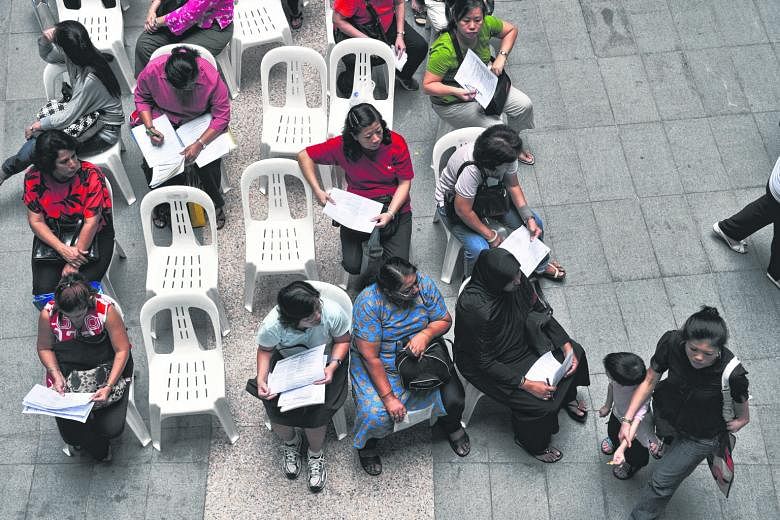We do not know their names or ages, what they looked like or what paths their lives took to reach such a point. Just the bare details of their hardships were sketched out in advertisements that began appearing in The Straits Times as the Great Depression smothered the world in its dark embrace.
As the Western economies came to a standstill, demand dried up for Malaya's best-sellers - rubber and tin - which were shipped out of Singapore's port, then the seventh-largest in the world. Plantations, traders and shipping firms went bankrupt, managers and workers were laid off. Optimism became the scarcest commodity of all.
Beginning in July 1930, The Straits Times set aside free space for blue-collar and white-collar workers to advertise their skills. Listed in a column, according to their race, these advertisements appeared daily for almost a year.
"European planter. Fourteen years' experience, last three years as manager. Fluent Tamil and Malay. Willing to take up any job. Excellent references.

"Chinese. Straits-born Hokkien. Thoroughly competent book-keeper and typist with knowledge of correspondence. Speaks fluent English, Malay and several Chinese dialects. Former employer gone into liquidation. Will accept any appointment, anywhere, at moderate salary.
"Indian. Aged 32, married, several years' experience as estate office clerk/conductor and mine clerk/storekeeper. Quick typist."
The idea of publishing such advertisements was sparked by one man's cry of despair in a letter to The Straits Times.
"It is difficult to know how to assist these particularly helpless victims of the slump," The Straits Times said in a column called Notes Of The Day on July 8, 1930. The column, which ran Monday to Saturday from 1928 until World War II broke out, featured musings on local happenings, big and small.
The column noted: "The writer says that after tramping miles and having scores of abortive interviews, he is developing a pronounced inferiority complex. His appearance, too, is suffering and worn heels and frayed-off cuffs do not inspire confidence.
"Vacancies are few indeed, but in order that no chance shall be missed, we are willing to place a certain amount of space daily at the disposal of men, European or Asiatic, who have been thrown out of work in consequence of the general depression.
"If those who are seeking employment will write in giving their qualifications and particulars of the last three appointments held, together with evidence that their dismissal was a direct result of the slump, we will advertise their needs without charge in a space specially set apart for the purpose."
The move was in keeping with the sentiment with which The Straits Times was founded in 1845. On Page 1 of its very first issue, it promised readers that "the principles on which the publication will be conducted are those which will ever identify The Straits Times with the general interests of the Settlement". Singapore was then part of the British-ruled Straits Settlements, which also included Penang and Malacca.
Five "Victims Of The Slump" stepped forward in the first burst of advertisements.
Eleven months later, the advertisements took up nearly the whole broadsheet page. Almost 100 men were listed on May 6, 1931, after which the column was discontinued because the newspaper thought employers were not making full use of it.
1905
FIRST ANNUAL
The first Straits Times Annual is launched, with an eye on the Christmas market.
1906
PRICE CUT
The price of The Straits Times is cut to 10 cents, and the size of the paper increased.

1910
RUBBER BOOM
Malaya is at the height of the rubber boom and numerous new companies, some fraudulent and unsound, emerge every day. Editor Alexander William Still is unsparing in his analysis of the industry and writes in October: "Rubber is coming down from the clouds, and must be dealt with on rational business lines."
1913
LIBEL SUITS
Editor Still's habit of making outspoken comments leads to the first of a series of commercial libel suits that the paper loses or has to settle out of court. By one estimate, $30,000 (in Straits dollars) is paid in costs and damages.
1914
WORLD WAR I
World War I breaks out, The Straits Times raises money and recruits volunteers for forces overseas.

